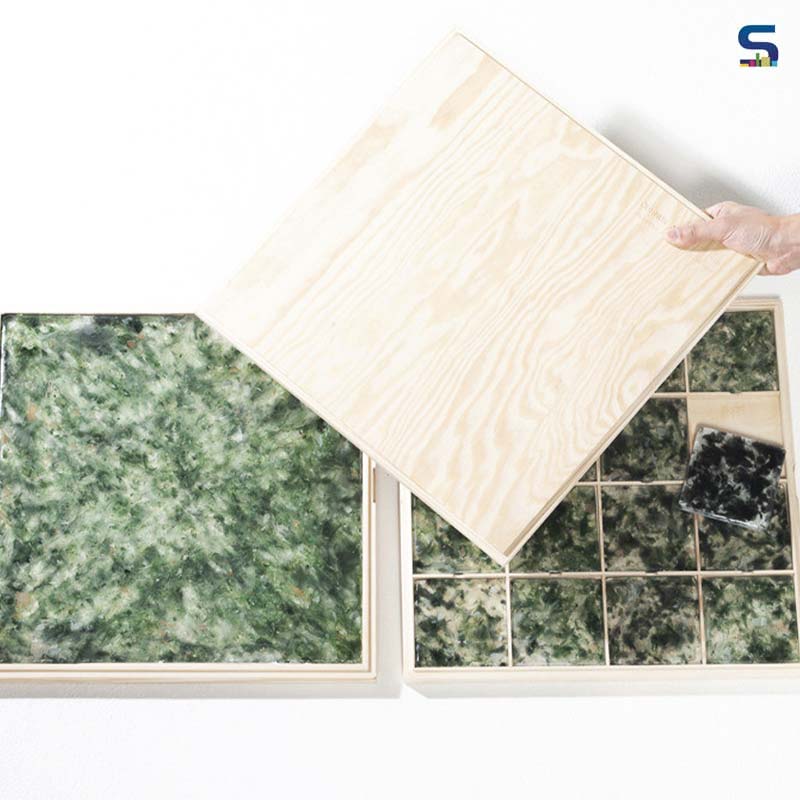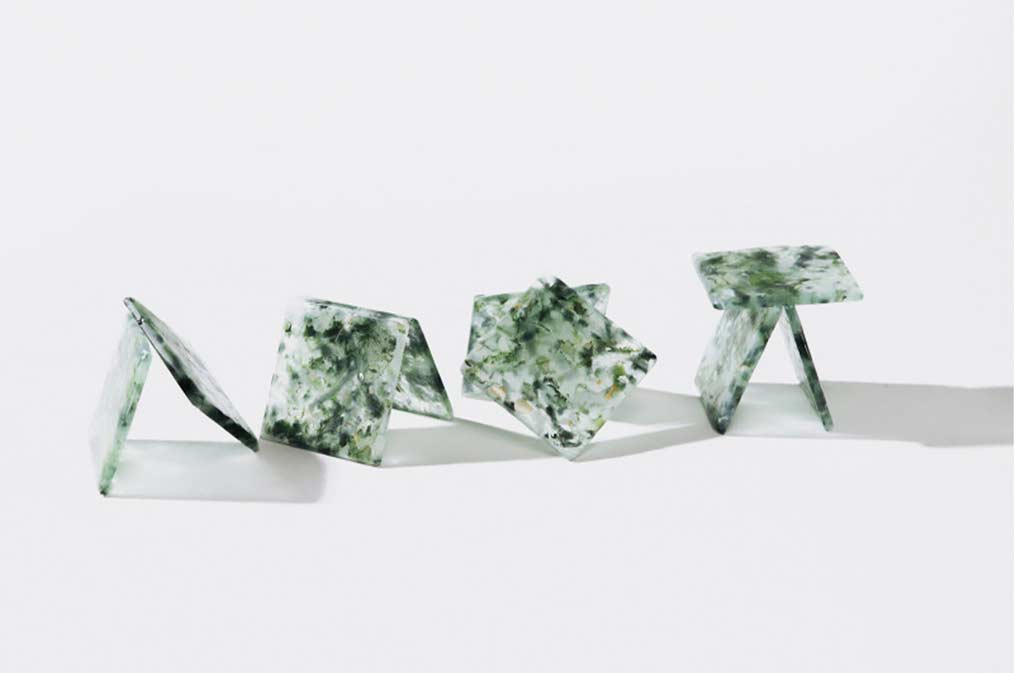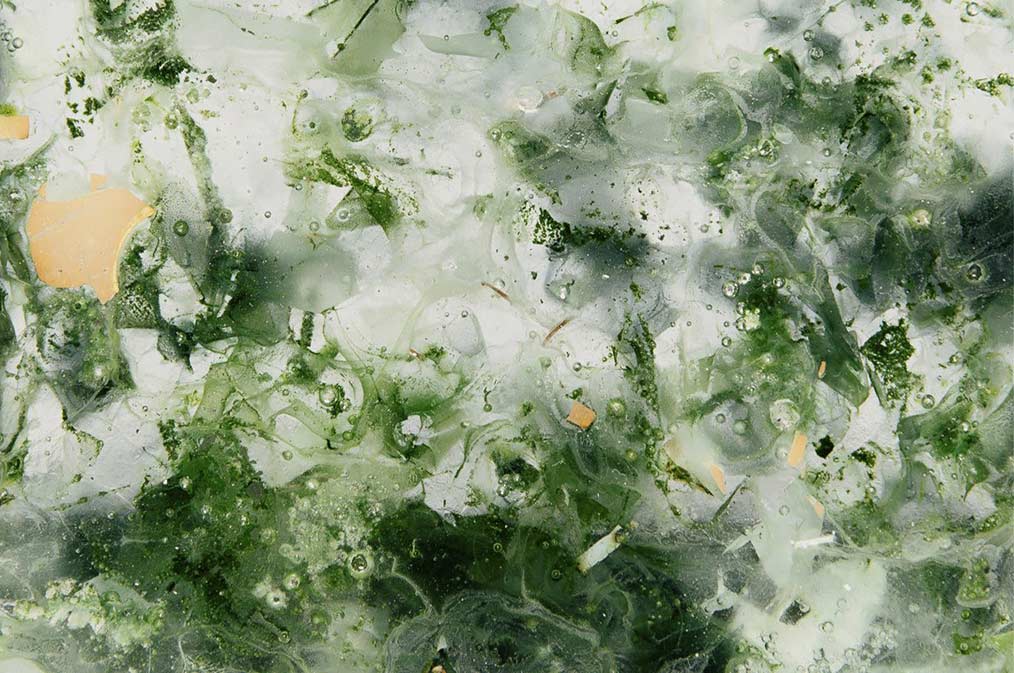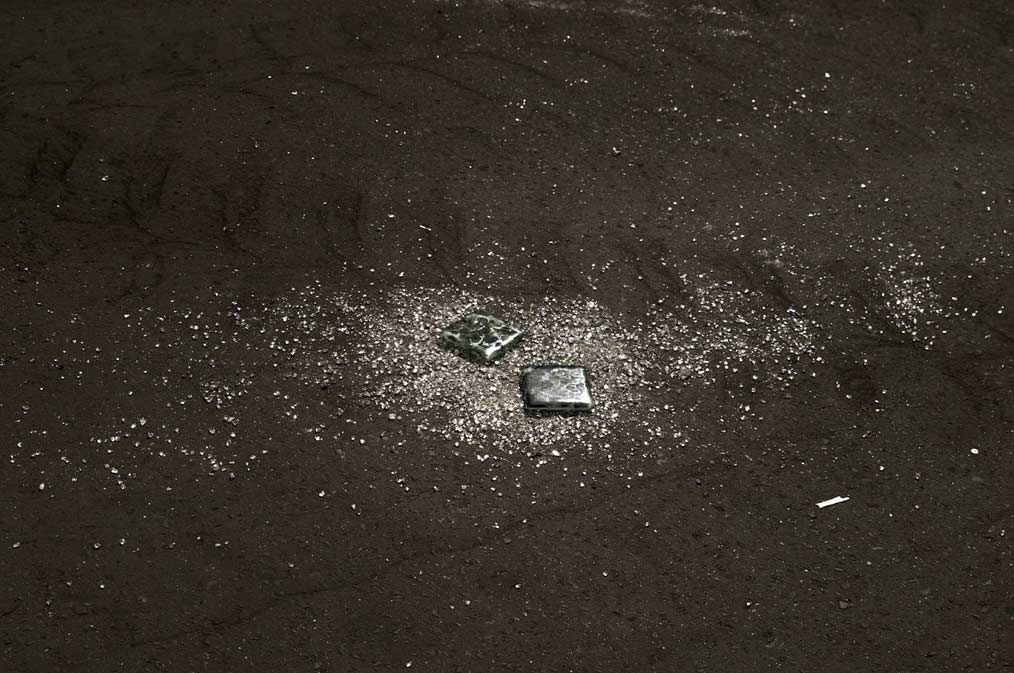
Focusing on eco-friendly materials and taking a step forward to a sustainable lifestyle, Norwegian architectural design studio Snohetta has collaborated with Brussels-based Studio Plastique to create tiles made by recycling glass.
 Common Sands aims at recycling glass from consumer electronics and transforming them into tiles that would otherwise head to the landfill.
Common Sands aims at recycling glass from consumer electronics and transforming them into tiles that would otherwise head to the landfill.
A design project titled Common Sands aims at recycling glass from consumer electronics and transforming them into tiles that would otherwise head to the landfill. The two studios worked on multiple trials, prototypes and variations to create a standard process for recycling the electronic waste glass components and other materials that are integrated in creating variable material of glass tiles.
.jpg) Common Sands: Forite tiles are developed in collaboration between Studio Plastique, Snohetta and Fornace Brioni as the result of more than three years of research and experimentation.
Common Sands: Forite tiles are developed in collaboration between Studio Plastique, Snohetta and Fornace Brioni as the result of more than three years of research and experimentation.
Impressed with the invention, Italian ceramic tile manufacturer Fornace Brioni saw the potential for its scalability and joined the bandwagon by buying their experience and processing knowledge. The team proceeded with waste glass sourced from ovens and microwaves to exhibit the aesthetic depth, function and potential of the recycled material. Common Sands: Forite tiles are developed in collaboration between Studio Plastique, Snohetta and Fornace Brioni as the result of more than three years of research and experimentation.
.jpg) The tiles can be used in bathroom or kitchen just like conventional tile.
The tiles can be used in bathroom or kitchen just like conventional tile.
Common Sands, an eco-friendly home decor that artistically transforms trash into treasure, can be used in the bathroom or kitchen just like conventional tile. The team designed the tiles in two different sizes, making them available in opaque and transparent choices. Crafted in a unique pattern and look, the tiles feature deeply complex terrazzo-like applications, including surface coverage and semi-transparent partition elements.
 The tiles feature deeply complex terrazzo-like applications, including surface coverage and semi-transparent partition elements.
The tiles feature deeply complex terrazzo-like applications, including surface coverage and semi-transparent partition elements.
 Common Sands is an eco-friendly home decor that artistically transforms trash into treasure.
Common Sands is an eco-friendly home decor that artistically transforms trash into treasure.
Image credits: Snohetta X Studio Plastique